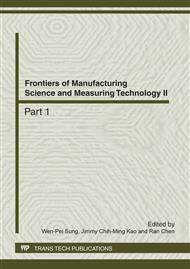p.1518
p.1522
p.1527
p.1532
p.1536
p.1540
p.1545
p.1550
p.1554
Online Parameter Identification of Synchronous Machine under Small Disturbance
Abstract:
The paper studies the online parameter identification technique of a synchronous machine, constructs its online parameter acquisition system, establishes its proper circuit model and state equation, uses maximum likelihood algorithm to identify the linear parameters of the machine under light load and low excitation, recognizes and modifies the saturation parameters with the magnetic circuit in saturation, inspects and revises the parameters and model in the big disturbance, and verifies the validity of the proposed method by the experiment and simulation.
Info:
Periodical:
Pages:
1536-1539
Citation:
Online since:
April 2012
Authors:
Price:
Сopyright:
© 2012 Trans Tech Publications Ltd. All Rights Reserved
Share:
Citation:


